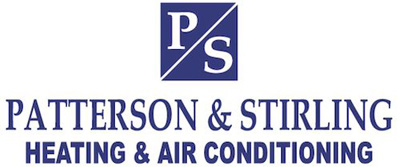Today’s homes are well sealed and insulated. While this helps with energy efficiency, too little fresh air, indoor pollution and continuous recirculation can cause problems.
There’s no need to worry, though, since Patterson & Stirling can help you have an energy-efficient home that’s also comfortable. Our services include an air quality audit and products to help improve indoor air quality in Erie, Pennsylvania.
Call us today to start cleaning your home’s air.

Evidence Your Home Deals With Poor Indoor Air Quality
Is your indoor air healthy? It might not be as healthy as you think. Pollution is often two to five times higher indoors than outdoors, as stated by the U.S. Environmental Protection Agency.
Indoor air pollution floating through your home’s air will sometimes lead to headaches and allergy flareups. And mold and mildew can trigger a number of health problems.

Health Problems
While many of these symptoms could be caused by other issues, they can also be a sign your home has indoor air quality (IAQ) problems. This is particularly true if you feel better while you’re away from home.
- Dry eyes, nose, throat or skin
- Headaches and sinus irritation
- Fatigue
- Allergies or asthma symptoms that are worse than normal
- Coughing and sneezing
- Dizziness or nausea
Environmental Problems
An outdated heating and cooling system may be a contributing factor in indoor air quality problems, especially if it’s unable to filter air, balance humidity or keep temperatures stable.
Here are several other signs you might need to purify your indoor air:
- Excessive static or mold growth
- High quantities of dust
- Stale or musty odors

How Can I Prevent Indoor Air Quality Problems?

Combating indoor air quality problems is comparatively easy with just 10 simple tips:
- Request an indoor air quality audit with Patterson & Stirling. We’ll examine areas that affect air quality, including humidity, carbon monoxide and volatile organic compounds (VOCs). Then we’ll review any concerns we come across and how you can fix them.
- Clean regularly to control dust mites, which can exacerbate allergies and asthma.
- Do what you can to get rid of secondhand smoke.
- Install a whole-home filtration system to get rid of odors, instead of concealing them with air fresheners or scented candles. The pollution includes chemicals that can lead to headaches or upset respiratory symptoms.
- Air out gas-burning appliances, such as stoves and water heaters, up and out.
- Keep your home’s humidity levels comfortable with a humidifier or dehumidifier, based on your needs. Adjust humidity under 50% to hinder mold and mildew spores.
- Check your home for radon. Long-term exposure to this invisible radioactive gas is the leading cause of lung cancer for nonsmokers, as reported by the EPA. You can buy a radon test kit online or get in contact with your state radon program for information on discounted or free kits.
- Implement a ventilation system to replace contaminated indoor air with fresh air from outside.
- Look for natural cleaning and painting supplies that are low in or free of VOCs. Elevated levels of VOCs can aggravate symptoms for family members with respiratory conditions.
- Install carbon monoxide detectors right outside bedrooms.
Start Breathing Healthier Air Today with Patterson & Stirling
With a full team of certified professionals and indoor air quality products, Patterson & Stirling can help your family breathe much easier. Call us or contact us online today to start.



